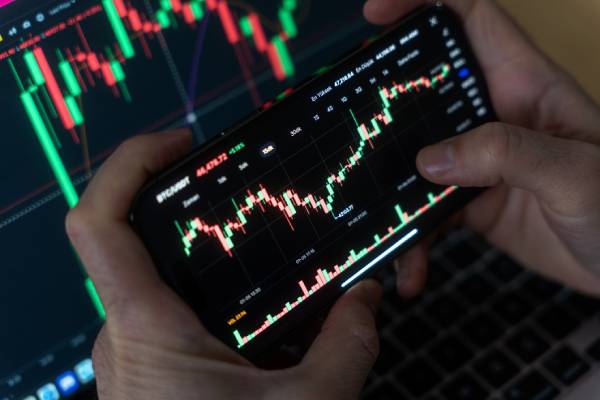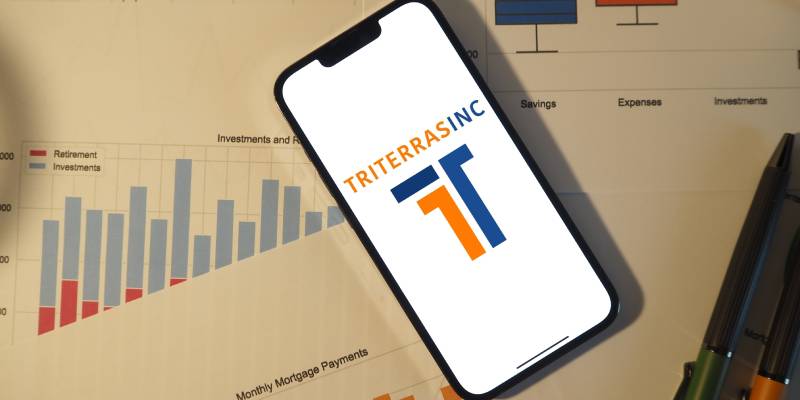Trade finance is vital to global trade, yet it faces formidable challenges. You might know the usual issues. Complex papers, compliance across borders, and the need for efficient systems. At the heart of modernizing this field is blockchain tech, which aims to make these processes more straightforward and more open. This is where the tale of Contour comes into play, reflecting the hopes and hurdles of digital trade finance. Even as new platforms battle for wide use and transparent rules, their path sheds light on how to tackle barriers to innovation in the trade finance world, stressing the need for regulations that adapt to and spur the growth of digital trade answers.
Grasping Trade Finance Hurdles in the Digital Age
As you dive into the digital shift of trade finance, It is vital to grasp the Trade Finance challenges faced by platforms like Contour. Contour started with the goal of digitizing and making documentary trade smoother using blockchain power.
The initial hope for such platforms was to transform the clunky and mistake-filled Letter of Credit (LC) processes, which have long depended on physical papers and manual checks.
Despite clear benefits like quicker deals and less risk, digital trade finance platforms have struggled to reach the needed scale and work well together. The split nature of the field and the lack of set standards have led to a continued reliance on paper-based processes, which are still the most accepted methods.
Seeing the potential of digital trade finance is as vital as the barriers it faces. The end of Contour is a significant moment in the industry story, but it does not lessen the drive for digital change. With a focus on creating a more joined and workable ecosystem, the future of digital trade finance looks bright for all in international trade.
With these insights into the digital trade finance scene, It is clear that while the path forward has challenges, the push for a more streamlined and safe system keeps driving innovation.
Trade Finance Hurdles The Contour Story
As you delve into the complex world of trade finance, understanding the rise and fall of platforms like Contour is critical. Contour’s path, from start to end, offers valuable lessons about the digital trade finance industry.
Launched in 2020 by top banks, Contour aimed to change how banks and firms issue, manage and process LCs electronically. Despite its new approach and the promised efficiency, Contour faced major hurdles that led to its end.
The platform’s struggle to draw enough users and make the needed money to cover costs was a significant factor in its downfall. This struggle is familiar to Contour. It reflects the broader issues digital trade finance platforms face in reaching scale and working well together. Contour’s tale is a reminder of the need for industry action and a long-term focus on innovation.
The digital trade finance field must improve how things work together, adopt new tech, and create a more inclusive ecosystem. By tackling these challenges, we can help digital trade finance reach its full potential, benefiting all and paving the way for a more streamlined and safe global trade scene.
Blockchain tech is vital to changing trade finance tools like the LC, showing that tech was not the problem in the Contour’s case.
Blockchain in Trade Finance Beyond the Myths
You have probably heard myths about blockchain in trade finance, claiming that tech is the main challenge. It is time to clear up these myths and look at the true power of blockchain, especially for tools like the LC.
The chance for blockchain to change trade finance is vast, especially for LCs. Usually, LCs are safe and widely used tools to lessen risk in international trade. Yet, they are bogged down in slow, mistake-prone processes with physical papers and manual checks. Blockchain offers a digital option to make LCs quicker, safer, and cheaper. By making LCs digital, blockchain can cut fraud, boost data control, and enable smart contracts, which could significantly streamline the trade finance process.
Considering blockchains’ role in trade finance, consider how using them could lead to a more streamlined, safe, and open industry. Moving to digital solutions in trade finance needs not just tech innovation but also a united commitment to change and a readiness to welcome new ideas.
The specific benefits blockchain offers for LCs include
- Cutting fraud through better checking processes.
- Boosting data control for all involved.
- Enabling intelligent contracts that automate and streamline trade finance processes.
With these blockchain benefits in mind, It is clear that the tech holds significant promise for changing the trade finance industry.
Driving Change Action & Commitment in Trade Finance
In digital trade finance, your voice and deeds can push progress. The field change needs more than just tech advances. It calls for industry action. The digital trade finance sector has seen its share of projects come and go, often with blockchain at its heart. Knowing that the tech is not to blame for these issues is critical. Instead, the field lacks a united leader to push for digitization across areas. What’s needed is a joint push. An action that goes beyond company and national lines to advocate for change.
Moreover, sticking to innovation in trade finance is a long-term task. Digital trade finance projects, including Contour, often ran out of time. One of the main reasons is the slow pace at which rules catch up with tech changes. Projects have had to stick to rulebooks without rules, which naturally limit quick growth. For example, it took four years of pushing for changes to UCC Article 3 before the draft for a new Article 12, which would allow electronic negotiable tools, was out. This pace is slow compared to the speed of tech change, showing the need for patience in the face of slow rule change.
As you tackle the digital trade finance challenges, remember that your commitment to change is as vital as the innovations you offer. The path to digitization is not a quick race but a long run, needing patience and a firm dedication to see projects through to the end. Your patience in facing these challenges is not just about overcoming rule hurdles. It is about clearing the path for a future where digital trade finance can flourish, backed by systems that work well together and set standards.

Interoperability The Key to Digital Trade Finance
As you move through the changing scene of digital trade finance, understanding the critical role of interoperability is vital. This idea is the primary support that lets different systems within the trade finance ecosystem share and use info smoothly. We have learned that interoperability is not just excellent but is needed for digital trade finance. The bond connects the split parts of the field, letting different platforms and tech work in sync.
Yet, reaching true interoperability needs a joint effort to set common standards and rules that all can agree on. The challenges are significant, but the benefits of a connected ecosystem are huge, offering efficiency, openness, and chances for new ideas. In this active scene, the support and trust given by rules become more critical.
Tackling Regulatory Hurdles in Trade Finance
As you dive into digital trade finance, Knowing the rule hurdles that block the way is critical. The pace of rule change is notably slow, often behind the quick tech changes. This slow catch-up can block the growth and use of digital trade finance solutions.
One of the biggest challenges is the lack of a set rule framework. Without it, digital trade finance platforms find gaining widespread use and acceptance hard. A split market, where each area has its own rules, further complicates international deals.
Setting frameworks is lovely to have and needs when looking at the field’s potential path forward. Such frameworks would give clarity and steadiness, letting digital trade finance platforms work more smoothly across borders. This is key for blockchain-based answers, which naturally have a global reach.
Your role in this changing scene is to stay informed and adaptable. As the field pushes for rule frameworks that can keep up with tech changes, you should be ready for the changes these frameworks will bring. Welcome the new ideas that come with digital trade finance, but also know the critical role of rules in easing these advances.
Harmonizing Rule Frameworks for Trade Finance
As you look at the scene of digital trade finance, you will quickly see the need for set rule frameworks. These frameworks support the smooth running of platforms that use distributed ledger tech (DLT) for deals. Insights from our sources show why such harmonization is not just good but needed.
The challenges faced by projects like Contour show the importance of having a united set of rules and standards. Without set rule guides, digital trade finance platforms are often forced to fall back to traditional rulebooks, which blocks the quick growth of tech and limits the chance for wide use.
Innovation in trade finance must be helped by rules that push the use of new tech. Rule bodies need to be proactive in updating guides to match the needs and abilities of modern trade finance answers. The changes to UCC Article 3 and the start of a new Article 12 are steps in the right way, but the pace of change must match the urgency of the field change.
As you think about what rule harmonization means, remember It is not just about making a good scene for current tech. It is also about clearing the way for future ideas that could further smooth out trade finance processes. Rules should be made to help, not block, the growth of digital trade finance.
The actual chance of digital trade finance will be seen when rules and new ideas work together to change the field.
Rules and New Ideas in Trade Finance
In the active world of trade finance, your grasp of rules is critical as they allow new ideas to make deals more efficient and safe. Rules must change to back tech advances while ensuring they follow international standards. As you think about the strategic way to take up digital trade finance, know that new ideas like tokenization are part of a larger scene that needs teamwork among all to agree on practices that ease tech use. This strategic way should involve tech answers and rule frameworks that push their use, adding to a more streamlined and safe global trading scene. As you welcome the chance for new ideas in trade finance, It is clear that the path to a digital future is tied to the change of rule frameworks that back and guide these advances.
Also Read: Exploring Blockchain Trade Finance The Leading Role of Contour
Strategic Take Up of Digital Trade Finance
As you look at the scene of digital trade finance, understanding the ways for its take up is critical. The move to digital trade finance needs a joint effort to teach banks and firms about its good points. This teaching is not just about the how but also the why. Why should they move from old ways to digital platforms? It is about showing the gains in efficiency, the cost savings, and the chance for broader financial inclusion.
There are several ways to ease the move very effectively. These include
- Teaching banks and firms on digital trade finance’s good points and efficiencies.
- Giving financial rewards, like lower fees for digital deals or help with initial setup costs.
- Ensure robust data safety and privacy steps are in place to build trust in digital platforms.
By focusing on these strategic ways, we can move towards a more streamlined, safe, and inclusive trade finance ecosystem.
Teaching Stakeholders and Offering Incentives in Trade Finance
Teaching banks and firms about the good points of digital trade finance is critical. As you think about the chance for quicker deal times and better traceability, It is essential to show the efficiency and safety that digital answers can offer. Financial rewards are equally crucial in getting people to use these new tech. These could include lower deal fees for early users or financial help for system use.
Your commitment to data safety and privacy is the foundation for building trust in digital trade finance answers. Vital safety steps protect sensitive info and ensure a solid trade finance ecosystem. As you focus on these parts, remember that they are not just needed but the base for building trust and use in the field.
Data Safety and Privacy in Digital Trade Finance
As the trade finance industry moves to digital answers, your understanding of the critical role of data safety and privacy becomes vital. The take-up of digital trade finance answers depends on the trust that these systems are safe from breaches and can protect sensitive info. This trust is not just a comfort. It is a need.
In a time when cyber threats are a considerable risk, vital safety steps are critical support to strengthen the digital trade finance structure. Your awareness of these risks should come with an appreciation of the efforts to lessen them.
Addressing these safety concerns is not just about stopping bad outcomes. It is a proactive step towards welcoming the future of digital trade finance. As we look ahead, the talk around digital trade finance will keep changing, with safety and privacy at its heart. This focus on safety is not just a response to possible threats but also a strategic move to ensure the long-term success of digital trade finance answers.
As you think about the strategic take up of these new ideas, remember that the path towards a fully digital trade finance scene is ongoing and constantly changing.
Digital Trade Finance Trends and Chances Ahead
As you look at the scene of digital trade finance, It is clear that gradual changes will shape the future of the field. The path ahead is marked by small steps that promise to improve and smoothen trade finance processes over time.
The good points of this change are significant, offering a view of more efficient deals and less risk. To see the total chance of digital trade finance, a firm focus on innovation and the take up of new tech is key. This focus on progress is what will drive the field forward.
The field’s willingness to change and develop new ideas shows its toughness and foresight. With a focus on creating a more streamlined, safe, and inclusive scene, digital trade finance’s future is bright. As the field keeps changing, the role of set rule frameworks becomes more vital in backing the growth and take up of digital trade finance answers.
Global trade leaders provides an insight into the complete details of trade finance giants. Visit https://www.globaltradeleaders.com/ for more trade finance leaders.



